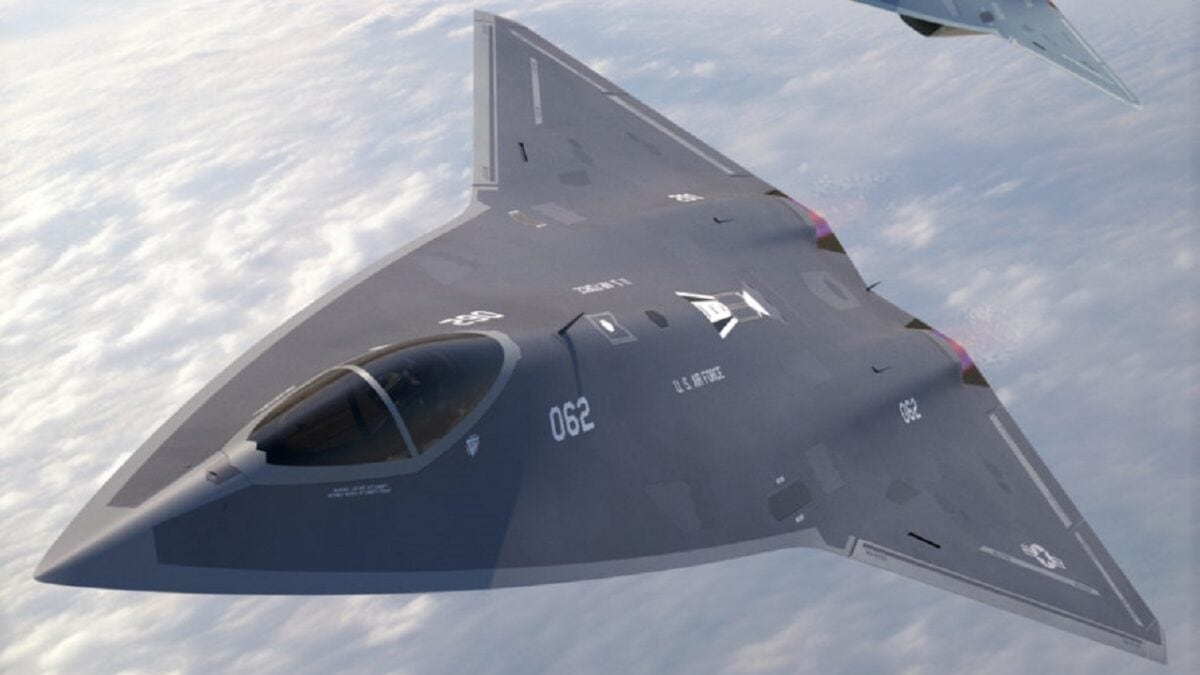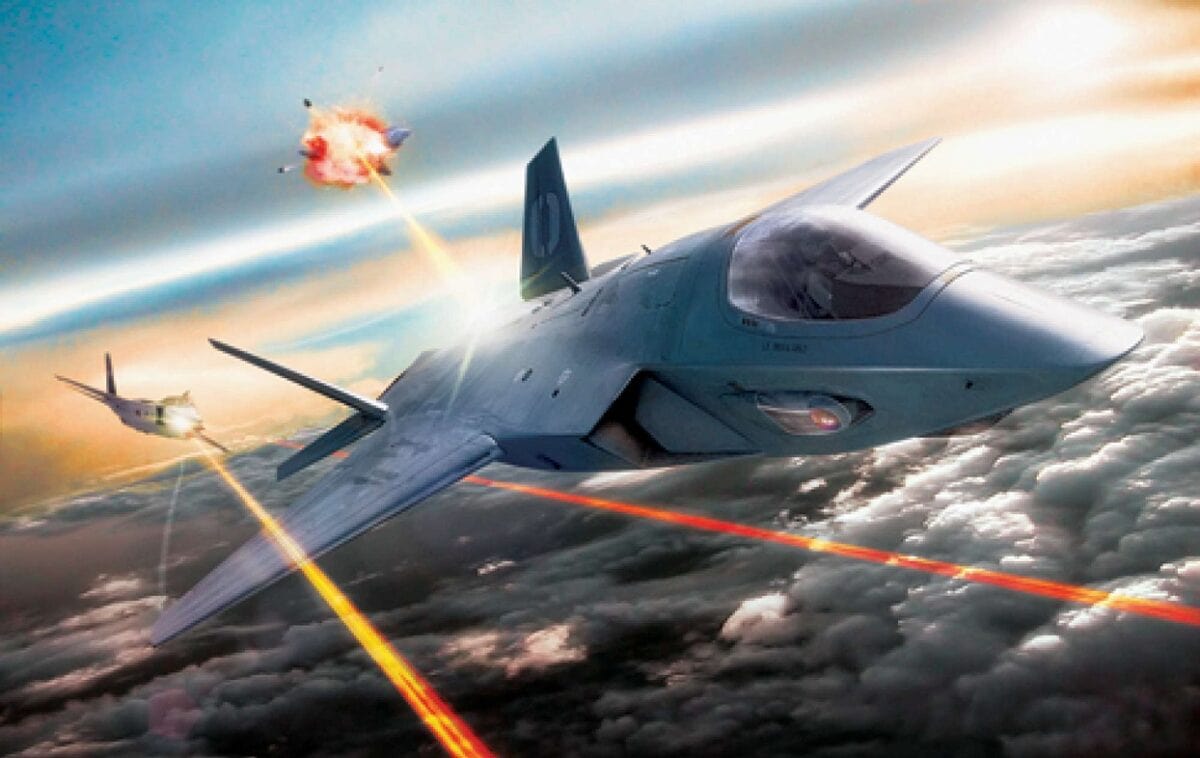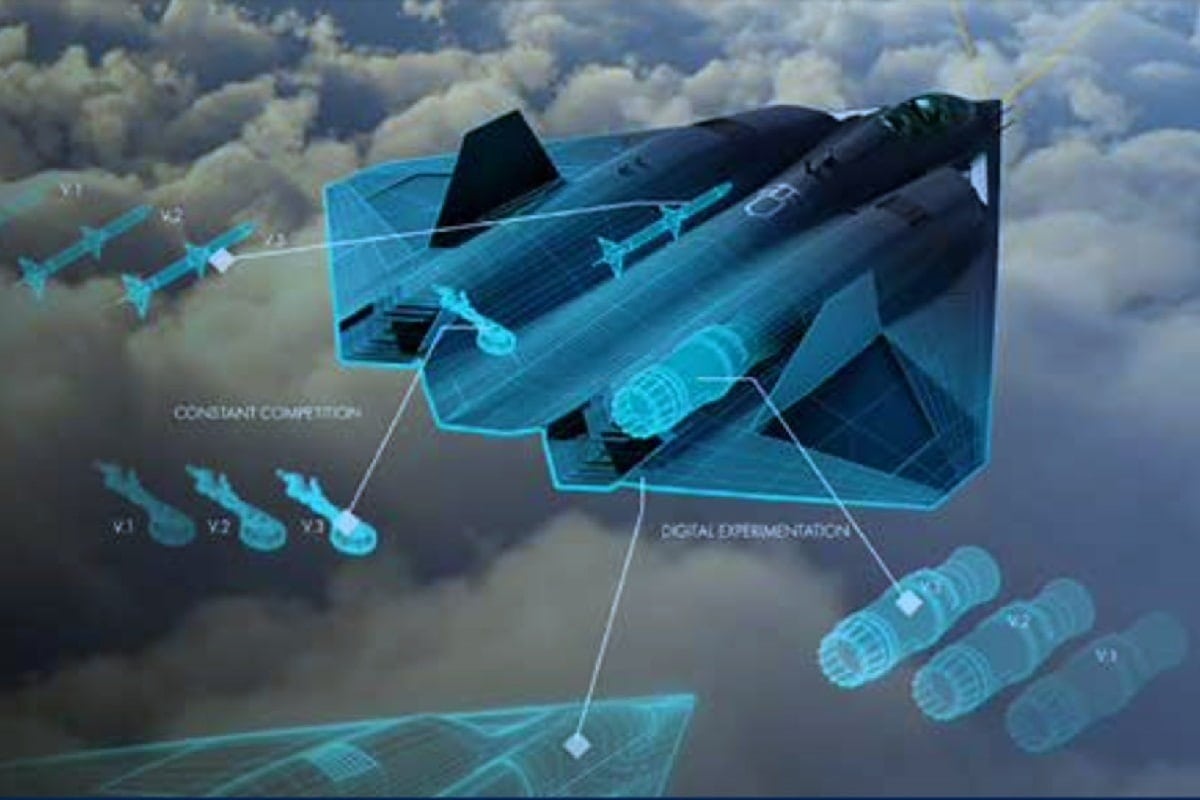6th Generation Fighter, Explained: The United States Air Force’s Lockheed Martin F-22 Raptor was the first true “fifth-generation” combat aircraft. Yet, it was Lockheed Martin’s F-35 Lightning II that was actually the first aircraft to be described as such – as it was really a marketing ploy that essentially “backfilled” the previous aircraft in the generation they best fit into. Today, however, the concept of “aircraft generations” is readily established.
Fourth-generation aircraft from the Cold War were arguably the first to add fly-by-wire and advanced avionics, while the fifth-generation further added stealth, sensor fusion, and supercruise. These attributes are seen in such aircraft as the Lockheed Martin F-35 Lightning II, as well as in China’s Chengdu J-20 “Mighty Dragon” and Russia’s Sukhoi Su-57 (NATO reporting name “Felon”).
6th Generation Fighter: The Next Generation
As aviation experts have noted, the 6th generation fighter will add additional capabilities, including some that haven’t been publicly defined, but which are understood to include flexible payloads; an adaptable airframe; long-range sensing; analytics and computing; laser directed-energy weapons; advanced materials; intelligent maintenance; dynamically reconfigurable architecture; cyber protection; manned-unmanned teaming (MUM-T); trusted artificial intelligence (AI) reasoning; airspace integration; hypersonic-propulsion technologies; space technologies; and a future ‘wearable’ cockpit.’
“Added to these technological attributes, the 6th generation fighter is designed to be affordable and to utilize futuristic manufacturing processes and methods,” Gareth Jennings, aviation editor at Janes, told 19FortyFive earlier this month.
Multiple Efforts Underway
Whereas the United States, China and Russia were the only nations that seemed to go “all in” with a fifth-generation aircraft, there are now multiple 6th generation fighter programs in the works. These include the United States Air Force’s Next Generation Air Dominance (NGAD) program, while the United States Navy is reportedly working on its own aircraft, confusingly also named NGAD to replace the F/A-18.
To further add to the overall confusion, there are two European programs that have been named the Future Combat Air System (FCAS) – including the British-led venture, with support from Sweden, Italy, and Japan, under Team Tempest; and the French-German-Spanish effort. The former has announced plans to unveil a test demonstrator within the next five years, while the latter has stalled out – leading some to speculate that the two programs could merge.
Moscow had previously revealed that it has launched an effort, the Mikoyan PAK DP, which could include an autonomous or pilotless aircraft. However, given the state of Russia’s military, and its inability to field any significant Su-57s, most aviation experts have questioned whether Russia’s effort can be taken seriously. The Kremlin has been quick to develop and roll out advanced technology, only to fail to produce those systems in significant numbers.
By contrast, back in the United States, the Defense Department inspector general is reportedly looking into whether the United States Air Force is moving too fast with untested tech, Breaking Defense first reported. The Air Force has sought to deliver the first NGAD aircraft by the early 2030s.

NGAD: Original artwork courtesy of Rodrigo Avella. Follow him on Instagram for more incredible aviation renders.
“Our objective is to determine the extent to which the Air Force demonstrated that the critical technologies used in the Next-Generation Air Dominance (NGAD) fighter aircraft were mature enough to support entry into the engineering and manufacturing development (EMD) phase of the NGAD program’s acquisition timeline,” Randolph Stone, assistant inspector general for evaluations, space, intelligence, engineering and oversight, wrote in a memo Monday announcing a new review.
The Air Force in a statement on Wednesday said it was aware of the IG evaluation and “will cooperate fully.”
China is Getting Help From Russia – But Not How You Think
China is also reportedly “on track” to develop its own 6th generation fighter, and is seemingly managing to keep pace with the United States Air Force. That was the warning from Gen. Mark D. Kelly, the head of Air Combat Command (ACC).
Speaking at the recent Air & Space Forces Association’s Air, Space & Cyber Conference, Kelly told reporters, “I cannot tell you today what’s going on in China except they’re planning for their 20th National Party Congress [in October]. But I can tell you what’s not happening. They’re not having a debate over the relevance of six-gen air dominance. And I can also tell you they’re on track.”
China has gone from buying Soviet/Russian-built aircraft including the Su-27 and Su-30, and successfully reverse-engineering those fighters – leading to the development of the J-16, while hackers likely stole technology that aided in the development of its J-20. China has continued to purchase even more advanced aircraft, to glean any technological advancements. Kelly explained that this is why the Chinese opted to acquire a small number of Russian Su-35s to get a closer look at that aircraft’s thrust-vectoring engines and electronic warfare sensors.

Image: Creative Commons.
Such an acquisition has made it a “little easier” for China to make its next great leap forward in aircraft development.
“We as a nation, we tend to let go of the trapeze and kind of make a leap for the next rung. Our Chinese frenemies, they tend to iterate,” Kelly added. “That makes a little bit easier for them to grab the rung when they go off-pitch.”
In other words, Russia continues to be capable of developing some advanced technology that it arguably can’t afford – and that is aiding China’s efforts. And that is bad for the United States.

